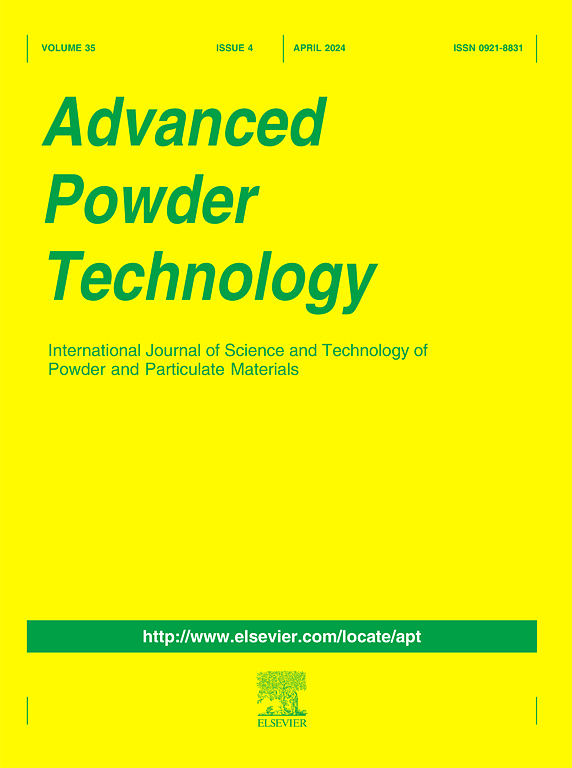Performance evaluation of dispersibility of submicron powder by jet mill and clarification of dispersion mechanism by addition of aid
IF 4.2
2区 工程技术
Q2 ENGINEERING, CHEMICAL
引用次数: 0
Abstract
This study investigates the challenging task of powder dispersion consisting of primary particle with nanometer size range in jet milling, with an emphasis on the impact of the pre-processing, particularly influence of the various dispersion aids addition. The primary objective was to elucidate the dispersion mechanisms involved when dispersion aids are added and how different aids affect dispersibility. The experiment included the evaluation of dispersibility in a spiral jet mill (SJM) and ejector without aids with three types of the raw material powders: SiO2, coarse Al2O3, and fine Al2O3. The experiment revealed that the SJM exhibits aligning the particle size distribution closely with that of primary particles. Subsequently, the dispersibilities of SiO2 powder in a SJM with adding three different aids, diethylene glycol monomethyl ether (DEGME), diethylene glycol (DEG), and water were measured. It demonstrates that DEGME was found to be more effective and stable than DEG, leading to higher dispersibility at certain concentrations. Further shape factor analysis for the pre-processed powder established the model for the aids-induced dispersion process, suggesting the formation of coarser aggregates with concavities, facilitating the detachment of particles from the edges of aggregates as the aid evaporates during the milling process. These insights offer valuable contributions to nanoparticle dispersion, a critical aspect in improving the quality of nanoparticle-layered products in various powder technology industrial applications.

求助全文
约1分钟内获得全文
求助全文
来源期刊

Advanced Powder Technology
工程技术-工程:化工
CiteScore
9.50
自引率
7.70%
发文量
424
审稿时长
55 days
期刊介绍:
The aim of Advanced Powder Technology is to meet the demand for an international journal that integrates all aspects of science and technology research on powder and particulate materials. The journal fulfills this purpose by publishing original research papers, rapid communications, reviews, and translated articles by prominent researchers worldwide.
The editorial work of Advanced Powder Technology, which was founded as the International Journal of the Society of Powder Technology, Japan, is now shared by distinguished board members, who operate in a unique framework designed to respond to the increasing global demand for articles on not only powder and particles, but also on various materials produced from them.
Advanced Powder Technology covers various areas, but a discussion of powder and particles is required in articles. Topics include: Production of powder and particulate materials in gases and liquids(nanoparticles, fine ceramics, pharmaceuticals, novel functional materials, etc.); Aerosol and colloidal processing; Powder and particle characterization; Dynamics and phenomena; Calculation and simulation (CFD, DEM, Monte Carlo method, population balance, etc.); Measurement and control of powder processes; Particle modification; Comminution; Powder handling and operations (storage, transport, granulation, separation, fluidization, etc.)
 求助内容:
求助内容: 应助结果提醒方式:
应助结果提醒方式:


